This year from 15–20 June 2019, I participated in the second edition of the Switzerland Tourism Influencer Summit together with 29 other content creators from 22 countries. Each of us was assigned to one of the four topic groups, covering hiking and nature, lifestyle and Swiss hotels, Swiss products, producers and food and lastly, art in public spaces and architecture. Being the one covering MICE, I joined the art in public spaces and architecture group to visit Davos, Basel and Zurich.
Attending this trip was a big personal milestone for me because Davos and Basel are two iconic destinations that host world famous events including the World Economic Forum, Art Basel and Baselworld. For a long time, I had wanted to explore these two destinations and learn about their DNA. I wanted to understand what elements make these events so unique, but also the role played by the destination in their success, its infrastructure and how both the event and destination have developed over the years.
Upon arrival, my knowledge of Davos was primarily about the World Economic Forum, and after exploring the destination, I came to realise that the history of art and architecture, as well as creating a piece of art by ourselves, can demonstrate that no technological advancement can replace the necessity of people to meet face to face and conduct business.
Arrival in Davos
Switzerland is a country where it’s easy to get around by public transport, and the simplest way to get to Davos is by train. I used the Swiss Travel System 8-day pass, which provided me with unlimited travel in Switzerland by train, bus and boat. It takes 2.5 hours to travel from Zurich to Davos, and this is the moment when the experience already starts—as soon as you board the train. When travelling from Zurich to Davos, two different trains are used—the Swiss National Railway SBB and the Rhaetian Railway. Both trains provide spectacular views throughout the journey. But the Rhaetian Railway is particularly noteworthy because it operates in the mountain region of Canton Grison, so the moment you board the train in Landquart, the view changes to picturesque small villages with wooden houses, mountains, viaducts, creeks and grazing cows. It’s like a fairy tale!
The Magic Mountain
The Magic Mountain is a novel by Thomas Mann from 1924. Mann was inspired to write this book while visiting his wife (who was suffering from a lung illness) in Davos, where she was residing in a sanatorium. But the connection between health tourism and Davos had begun previously.
Davos first became world known for the health benefits attributed to the Alpine air when around 150 years ago, the German physician Alexander Spengler, who, after completing his medical studies came to work in Davos, discovered that no resident of the village had suffered from tuberculosis, which at the time was spreading across Europe. He attributed the lack of the epidemics spreading to Davos to the special mountain climate and informed his students about his conclusions.
The word about Spengler’s treatment for tuberculosis spread quickly across Europe, laying the foundation for developing health tourism and gaining international reputation for the destination, with the first hostel opening in Davos in 1860.
From 1883, Davos began developing further as a ski destination, with the arrival of the first pair of Telemark skis from Norway, when subsequently new models were made by local wainwrights based on the original prototypes. That development led to the first ski races, and later developed to other winter sports, including sledge races, ice skating on the frozen lake of Davos, curling and the Ice Hockey Club Davos being founded in 1921.
In 1971, the European Management Symposium was founded in Davos by the German engineer and economist Klaus Martin Schwab. In 1987, this name was changed to the World Economic Forum (WEF) as we know it today. Since its inception, the WEF made the destination known to the business world as the meeting place of leaders from governments, academia, non-governmental organisations, businesses and civil societies.
But there is more to Davos than health tourism, winter sports and the WEF. On this occasion, we had a unique opportunity to explore the destination further and focus on art and architecture.
Hard Rock Hotel Davos
Our base during the Switzerland Tourism Influencer Summit was at the Hard Rock Hotel Davos, where we all stayed for two nights and also had our educational sessions during the summit. On the first night, we met representatives from Grisons Region and Davos Klosters who told us about the unique opportunities for holidays in the region and the new summer campaign ‘sports unlimited’, highlighting the activities you can become involved with, such as hiking, biking, climbing and canoeing. I learnt that Grisons is the largest Canton in Switzerland, with three UNESCO World Heritage Sites and the only national park in Switzerland. The emblem of the Canton is the ibex, which is to be found painted on the houses and also on the coat of arms of the Canton.
Language and culture go hand in hand in Grisons, with three official languages being spoken there: German, Italian and Romansch. That combination makes for a rich cultural experience that evolves around food, architectural styles and traditions coming together to form a unique mixture of experiences! Davos Klosters is the complete name of this destination, where Davos is the ‘Alpine Town’—the urban, modern, historic and dominant— and Klosters is the ‘Alpine Village’—the charming rural, and culturally anchored.
The Hard Rock Hotel Davos was an ideal base for the summit because it has all the necessary facilities and offers various ways to use the space. We had our first introduction at the conference space downstairs, and on the second day (the conference day), this space was split into three rooms for the workshops. On the first night, we had dinner at the hotel restaurant, and on the second night, dinner was provided at ‘The Chapel’—a dedicated event space that can be set up for a gala dinner, but also as a conference venue, which we also used during the conference. And that’s not all, the roof terrace offers the most spectacular and iconic view of Davos: the mountains, the St. Johann church and the iconic flat roofs, and it’s there where we had our pre-dinner Apero on the second night. And last but not least, our lunch on the third day just before departing to Basel was on the restaurant’s sunny terrace. With 94 guest rooms and conference space for up to 120 in one room, we used the space to its fullest!

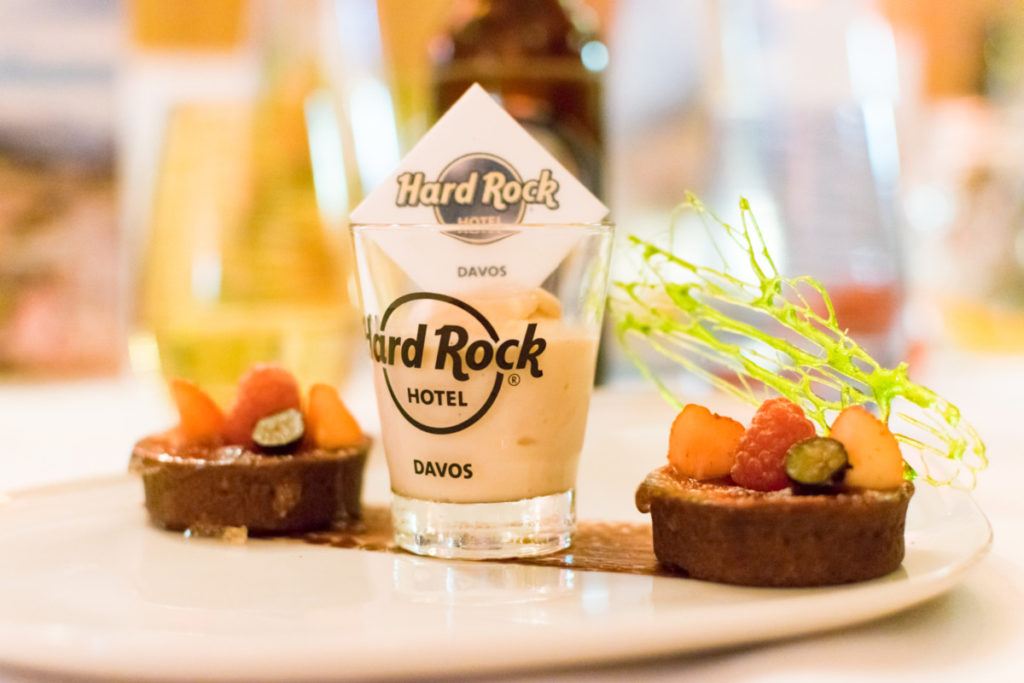

Kirchner Museum
Alexander Spengler was responsible for making Davos an internationally reputable destination, and German artist Ernst Ludwig Kirchner was also a key personality in the history of this town. In 1917, at the age of 37, Kirchner came to Davos to cure himself from a mental breakdown that had occurred after serving in the military and his toxic lifestyle in Berlin and subsequently, he decided to settle in Davos. It’s in Davos where he continued to work on his art, and he became the iconic role model for expressionism art that is characterised by bright colours and simplified forms and shapes, which are to be seen in his works. Life in Davos inspired many of his works because he was fascinated by the contrast of peasants and the metropolitan lifestyle, and he extensively portrayed the nature of his acquaintances in his works.
One of the most famous works is called ‘Summer in Davos’ and on our way to the Kirchner Museum, we stopped at the view point of this picture before heading to see the original painting. His opium addiction returned in the 1930s, when he couldn’t sell his art pieces to Germany anymore, and he committed suicide in 1938, aged 58. The museum opened in 1993 and contains over 400 pieces of his art.
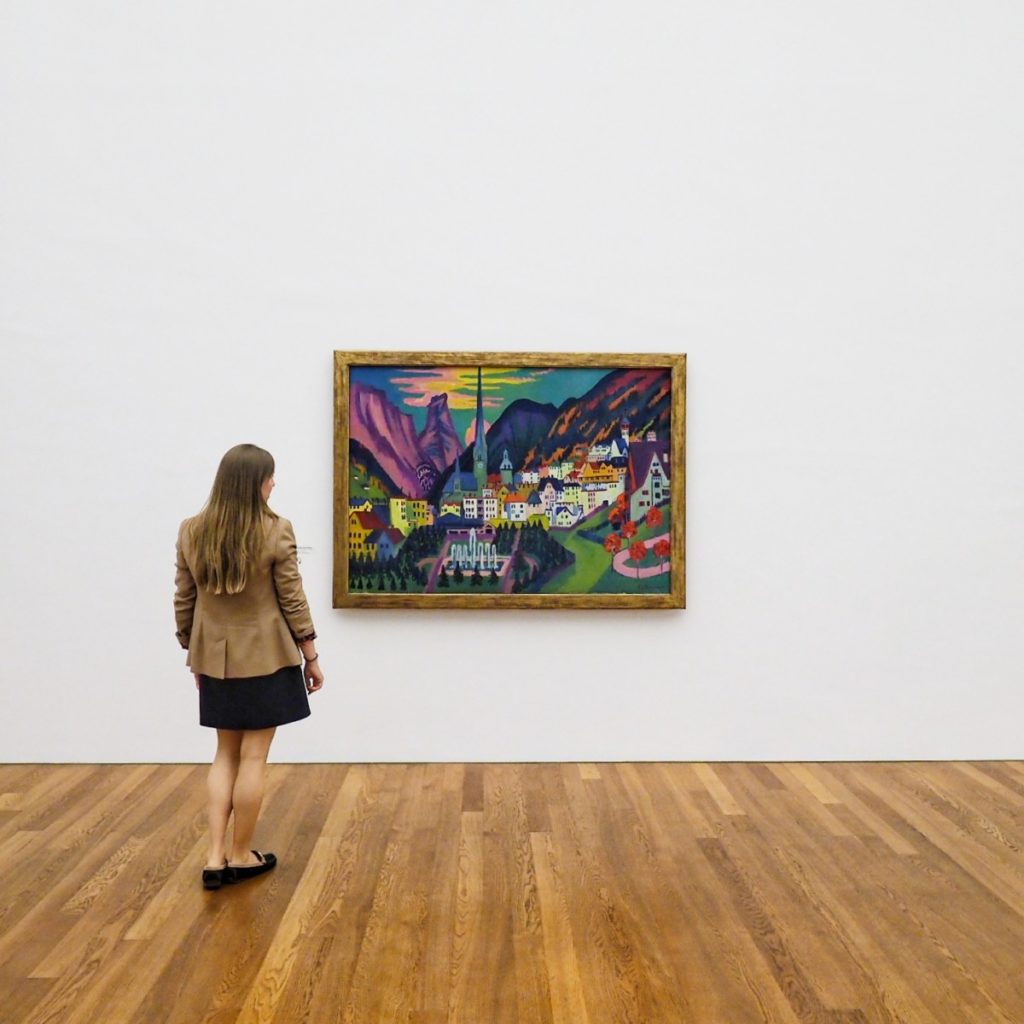
The museum is open to the public, and during closing times it can be also hired for private events or private tours, such as the one we joined to learn about art and architecture. The building, designed by architects Annette Gigon and Mike Guyer, also has a highly unique architecture that has won the Daylight Award for its original way of using daylight with the aim to improve life quality and energy efficiency. The innovation comes as a result of leaving empty space between the window roof and the flat ceiling. This empty space in between is also surrounded by windows and enables the unique lighting system, allowing natural light to come not only from the ceiling above, but also from the sides. The flat roof is a distinguishing sign of the architecture in Davos.
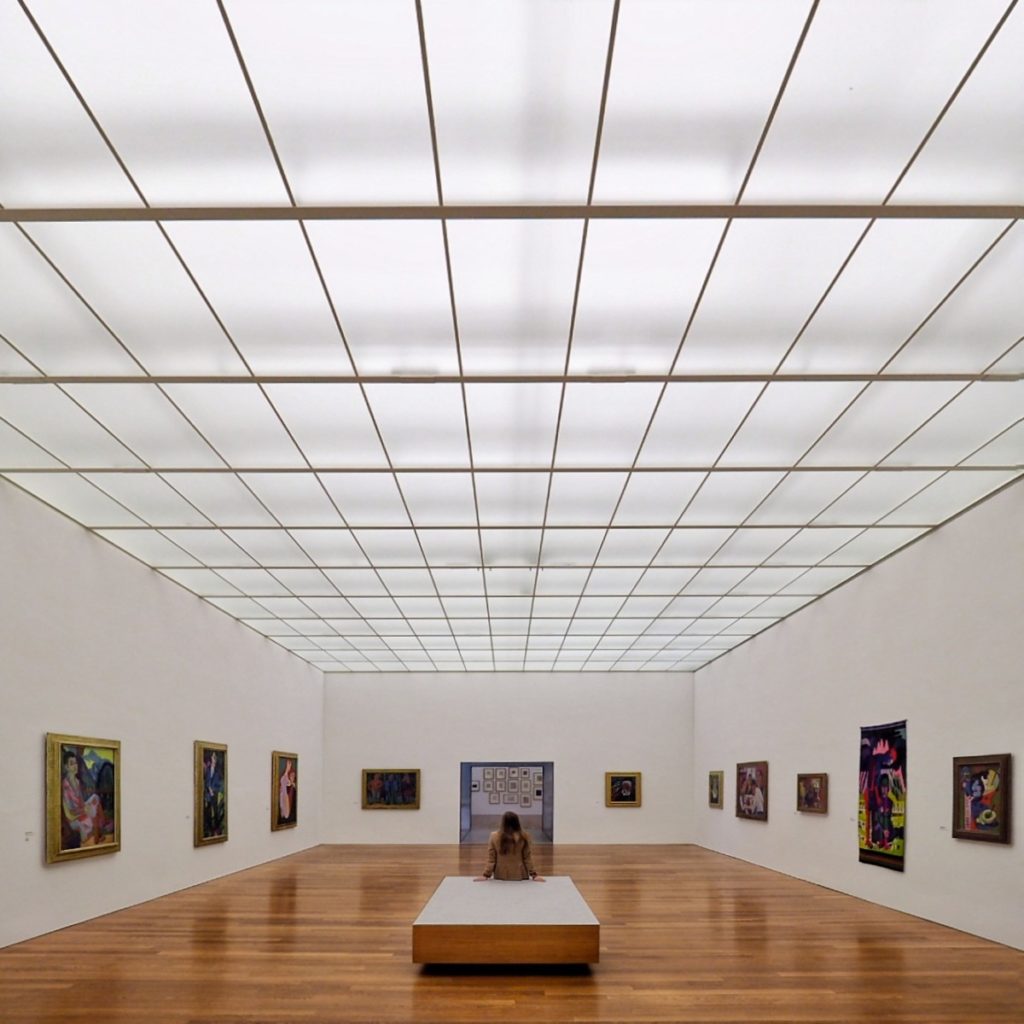
The flat roofs of Davos
This style is in contrast with the traditional chalet design of the Swiss mountain destinations, but such an approach makes Davos particularly unique for its architecture and tells a story of its past. When Davos first became known for the health benefits of its Alpine air that cured the tuberculosis epidemics, the patients came to stay at the sanatoriums that included sun and fresh air as part of their treatment. And this important aspect led to construction that provided wide windows to flood the rooms with natural light and balconies that face the sun. Additionally, the flat roofs guard from the avalanches, and the roofs are not actually flat, but slightly inclined to the middle so that the snow can melt and flow through the roof gutter; this design also allowed collection of clean water for the patients.
InterContinental Davos
The InterContinental Davos is the newest opening in Davos. It was launched in 2013 with 216 rooms, and its largest conference room has a capacity of up to 430 people. The nearby pinecone forest inspired the design of the building, which has a smooth overlapping structure, with a repeating geometric pattern that creates a ‘ripple effect’. The oval shape of the building gave it the name ‘golden egg’, and it is recognised worldwide for its architectural uniqueness.



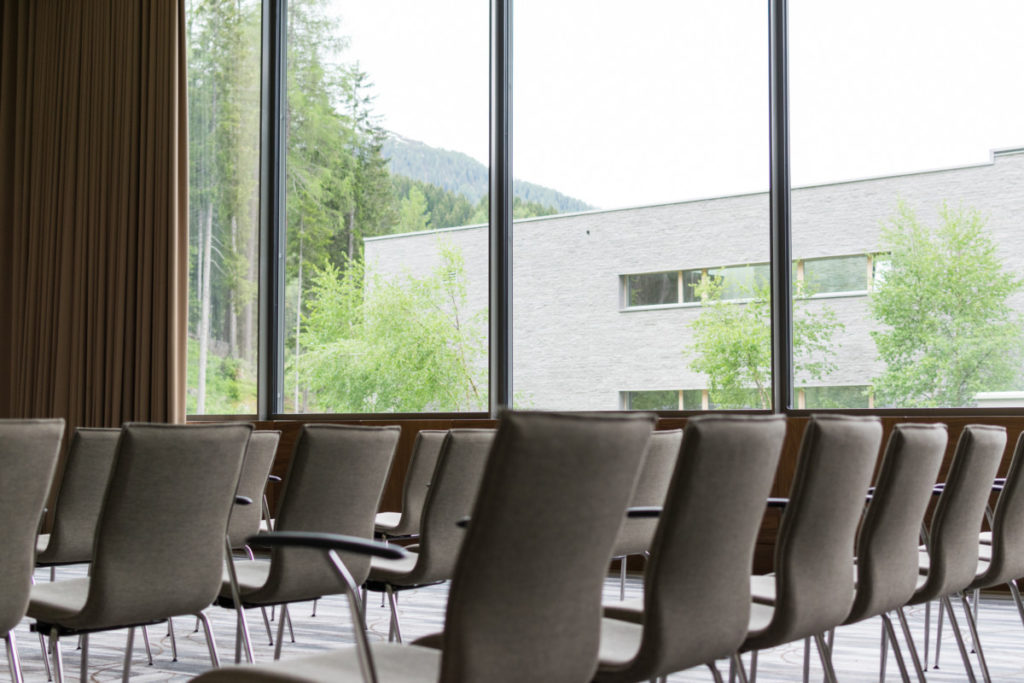
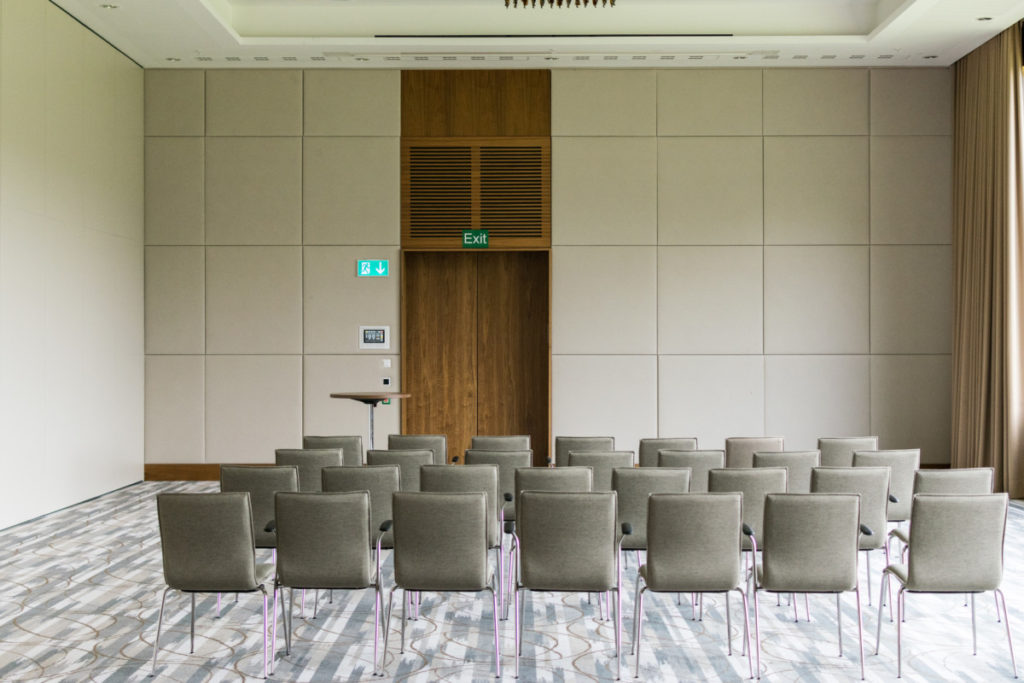
Both outside and inside it’s an architectural masterpiece, highlighting the natural elements of the regions and using the warm colours and materials to replicate the feel of the nearby forest and mountains. For example, the Wave Chandelier in the lobby was inspired by the snowy mountains behind the hotel, and it’s shape, colours and material represent air, snow and light.
Davos Congress Centre
Dating back to the origins of medical tourism in Davos, Davos has a strong positioning in the medical congress industry. The Davos Congress Centre opened in 1969, only two years before the WEF took place there. There has been an extension of the building three times since, in 1979, 1989 and 2009. Now, it has a total capacity for 5,000 people across three buildings, and a maximum of 1,800 people in one room. During the WEF, the congress centre serves as the main venue.
The success story of the WEF has been a long time in the making, and it’s one of the most exclusive and prestigious events in the world. It was interesting to learn that the event and the MICE destination developed almost simultaneously for Davos to become a highly ranked MICE destination on the international scale. There are always many factors that contribute to the success of an event, and in this case the longevity, building the foundation for excellence gradually, increasing networks and expertise are key pillars for that success. It is highly impressive how a 4-day event can shape the entire image of a destination, create jobs, mobilise media outlets and be a platform for innovation and decision-makers to decide on the future of countries, societies and communities under one roof in Davos.
Restaurant Extrablatt
Just next to the congress centre is the Restaurant Extrablatt, where we had our lunch. Another interesting fact is that during the WEF, this restaurant becomes the official caterer for all staff members who are working during the WEF and operates for 24h during the event. Outside the WEF, it can be booked as a venue for a group or business lunch and it’s conveniently and centrally located.
Art workshop with H. Art Kunst Davos
After the site visits, we headed for our final activity of the day—an art workshop with Andy Hofer from H. Art Kunst Davos, located in Davos Frauenkirch. No one is an artist until they take their first brush, and it was such a powerful workshop—I was surprised how it made me feel and think about creativity and events. It fitted so perfectly into the entire concept of our art tour and the symbolic nature of the message it conveyed.
We were tasked to paint our Davos experience on a piece of a wooden puzzle. No instruction or guidance was provided, just paint. It came naturally to some, less to others (like me), but in the end, we all pulled our parts together. For everyone who works in digital communication, photography or any other industry that requires to be constantly ‘online’, taking a brush and starting to paint can be a particularly unusual, but at the same time rewarding experience. Secondly, the symbolism of this workshop demonstrated that each individual is part of a community, and when we do something it has influence on others, and when we make a ‘piece of the puzzle’ it has consequences on our peers—one way or another, it fits together. We also had certain dynamics while working on our pieces and bonded more strongly as a team because ‘we are each individuals, but we belong.’
We all work ‘digitally’, ‘remotely’, ‘online’ and are only one email, phone call or social media post away from our business partner. When I talked with Andy, inevitably we mentioned the WEF, and whether there would be time for us all to meet virtually instead of hosting an annual meeting, and the answer was no. We need to meet to build trust, and therefore, events will become even more important in this digital age, and sharing experiences together as we had in Davos can’t be replicated in the digital space, neither for the WEF nor for your and my events.


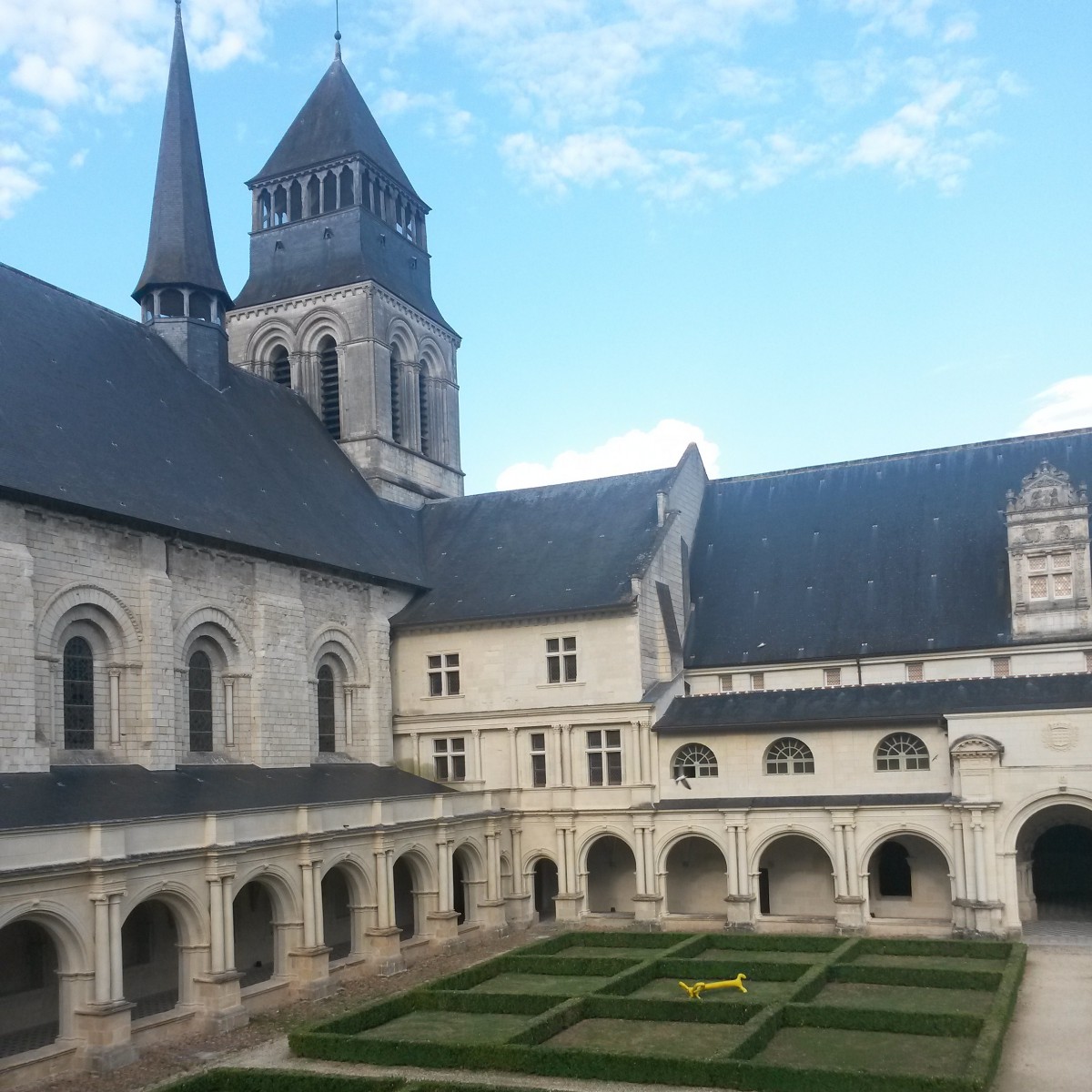
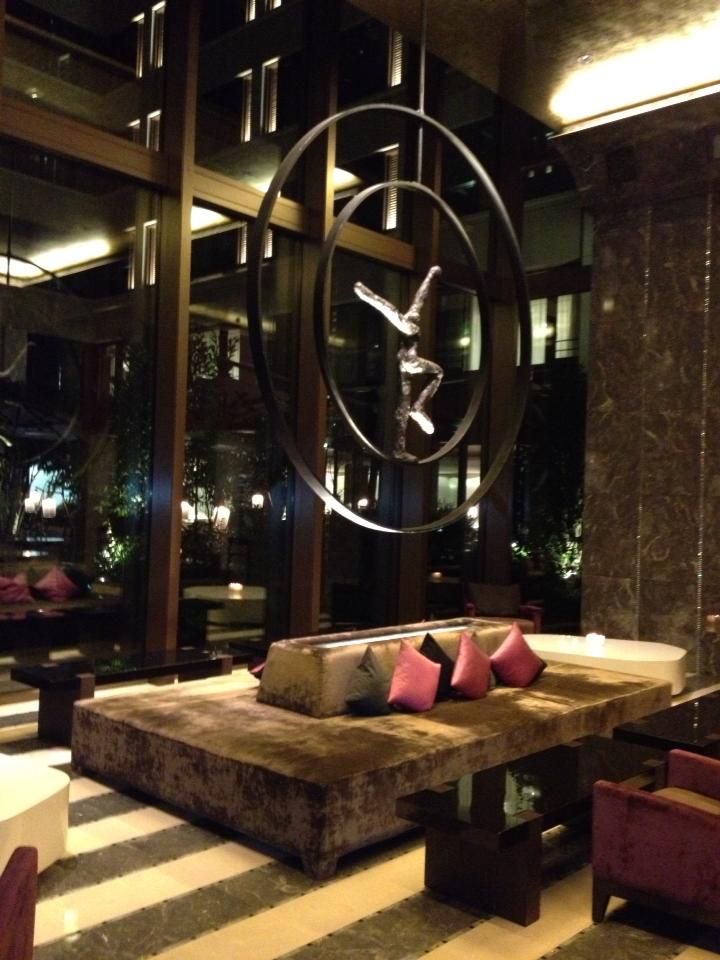
No Comments